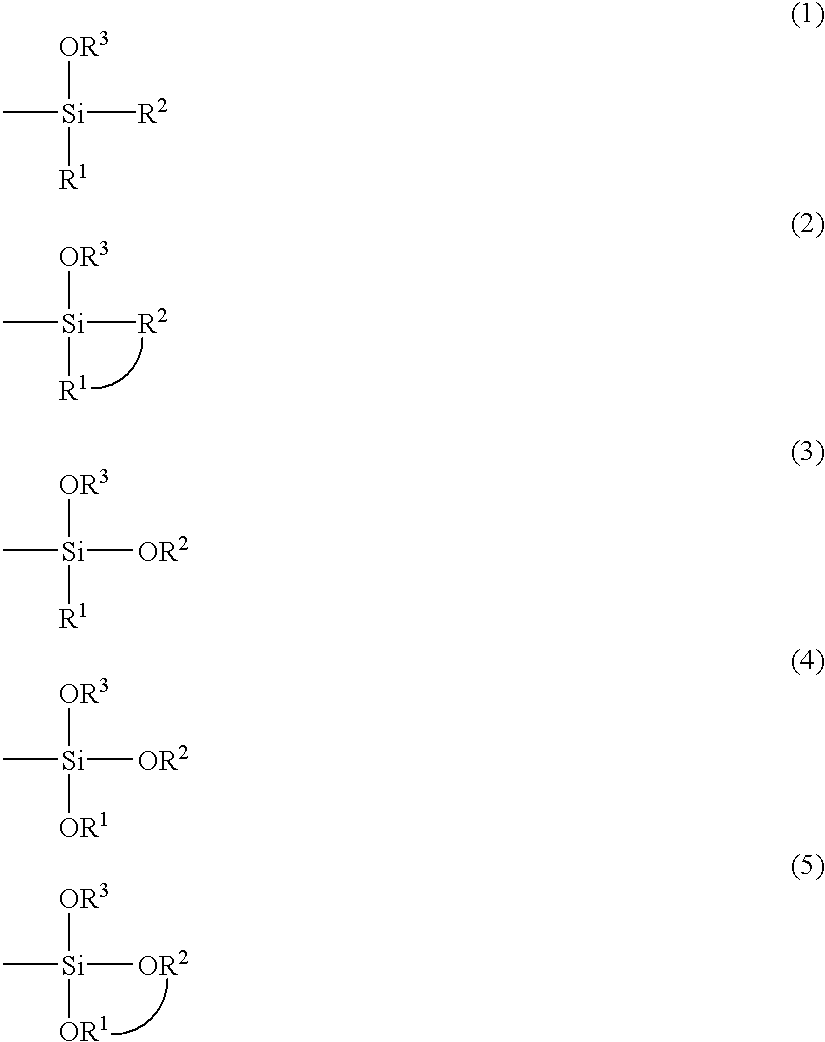Methods and compositions for ink jet printing of pressure sensitive adhesive patterns or films on a wide range of substrates
a technology of pressure sensitive adhesives and compositions, applied in the field of forming psas, can solve the problems of inherently wasteful and labor-intensive step of die-cutting adhesives, inconvenient application, and contact printing techniques, and achieve the effects of minimizing dot gain, low viscosity, and low cos
- Summary
- Abstract
- Description
- Claims
- Application Information
AI Technical Summary
Benefits of technology
Problems solved by technology
Method used
Image
Examples
example 1
[0130]This example describes the preparation of acrylate oligomers P1-P4 suitable for ink jet printing.
[0131]Acrylate oligomers were made by bulk polymerizing monomer mixtures according to the procedure described in U.S. Pat. No. 5,637,646 (Ellis) and using the formulations given in Table 1.
[0132]
TABLE 1Adhesive Precursor CompositionsOligomerIOAAAMMAHEMAMeStyIBOAStyreneABPMwMnP1873100.566,9009,700P2835120.528,0004,200P37020100.567,90016,100P485150.576,1008,700Mn and Mw are reported in grams / mole and were determined by gel permeation chromatography. Amounts of reactants in Table 1 are in parts per hundred by weight.
example 2
[0133]This example demonstrates the preparation of jettable precursor formulations A1-A6. Adhesive formulations were prepared according to relative amounts of reactants as described in Table 2 by dissolving the (meth)acrylate oligomers in IOA / AA monomers, and adding the photoinitiator and crosslinker. In the cases where fumed silica was used, the silica particles were mixed with the monomers and stirred with a mechanical stirrer to produce gel like suspensions.
[0134]
TABLE 2Jettable Adhesive Precursor FormulationsSilica Source / Oligomer / FormulationIOAAAamountamountKB-1MOPTA1637P1 / 300.140.15A2637P2, 300.140.15A3728P3, 200.140.15A4637P4, 300.140.15A586.49.6CAB-O-SILNone0.140.15M5 / 4A686.49.6AEROSILNone0.140.15R-972 / 4Amounts of reactants in Table 2 are in parts per hundred by weight.
example 3
[0135]This example describes the printing of precursor formulations A1-A6. In separate procedures, precursor formulations A1-A6 were respectively added to the printhead reservoir attached to a Trident MICROCODER piezo inkjet printhead available from Trident International, Inc. of Brookfield, Conn., USA with 50 micrometer orifices (Conditions were: P=−5.8, V1=0, V2=−100, T1=100 microsecond, T2=70 microsecond) and degassed for 2 hours at 50° C. The reservoir was then heated to 90° C. and the mixture was successfully printed onto a vertically oriented polyethylene terephthalate film having 37.5 micrometer thickness.
[0136]A rectangular image was printed by jetting each precursor onto a polyethylene terephthalate film wrapped on a rotating drum. This process was repeated until the printed adhesive layer reached a thickness of approximately 50 micrometers. The film with the printed pattern was placed in an ultraviolet (UV) curing chamber inerted with nitrogen and irradiated under a bank o...
PUM
| Property | Measurement | Unit |
|---|---|---|
| thickness | aaaaa | aaaaa |
| viscosities | aaaaa | aaaaa |
| viscosities | aaaaa | aaaaa |
Abstract
Description
Claims
Application Information
 Login to View More
Login to View More - R&D
- Intellectual Property
- Life Sciences
- Materials
- Tech Scout
- Unparalleled Data Quality
- Higher Quality Content
- 60% Fewer Hallucinations
Browse by: Latest US Patents, China's latest patents, Technical Efficacy Thesaurus, Application Domain, Technology Topic, Popular Technical Reports.
© 2025 PatSnap. All rights reserved.Legal|Privacy policy|Modern Slavery Act Transparency Statement|Sitemap|About US| Contact US: help@patsnap.com

